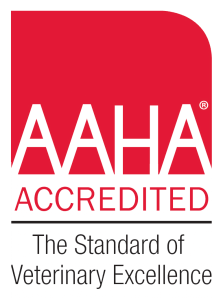What are the different types of diagnostic imaging?
There are quite a few we can use. The most common is X-rays, which are a 2D static image of your pet. And then there's ultrasound, which is also 2D, but can be in motion and directed in different places. A CT scan is what we have here, and it is a 3D image of your pet. MRI is similar but is a bit better at looking at neurological tissues. And then there is also dental X-ray, which allows us to look at very small areas in specific detail. And nuclear scintigraphy, or nuclear imaging, which allows us to see the functionality of different organs.
Dr. Stephanie Munyon
Brook-Falls Veterinary Hospital
What are some of the things that a veterinarian will look for with diagnostic imaging of my exotic pet?
We're basically looking for anything we can't see on our physical exam. On rabbits and guinea pigs very commonly, we need to get a better look at their teeth, but their mouths are very small, so we need things like x-ray or preferably a CT scan. We can also check out your pet's nasal passages, your turtle's lungs, the inside of your hedgehog. There's a lot that we can see.
Does my exotic pet need sedation for diagnostic imaging?
That depends a bit on your pet. Some of them are more amenable to imaging than others. Some become stressed or are just too fast and wiggly to stay still. In general, with a CT scan, your pet in general will have to be heavily sedated or anesthetized for the imaging.
When is an x-ray used versus an MRI or ultrasound, or CT scan for my exotic species?
X-rays and ultrasound are oftentimes our first line of imaging because we can do it quickly, and a lot of times with your pet will wake, and oftentimes at the time of the appointment. A CT scan is going to give us a lot more detail and remove what we call superimposition. So that is when an image is stacked on top of each other, which when you're taking a 2D picture, everything is just stacked on top of each other and you have to interpret a bit, where when you use a 3D modality, you can remove that problem.
If you still have other questions and you'd like to reach out to us, you can call us directly at (262) 846-6006, or you can email us at [email protected]. But please do reach out, and we'll get back to you as fast as we can. Don't forget to follow us on social media Facebook, Instagram


